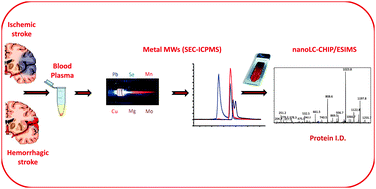Detection of metals and metalloproteins in the plasma of stroke patients by mass spectrometry methods
Abstract
Stroke is the leading cause of adult disability, worldwide. Metalloproteins and metals play key roles in epigenetic events in living organisms, including hypertension, the most important modifiable risk factor for stroke. Thus, metalloproteins may be important target biomarkers for disease diagnosis. The primary goal of this study was to assess metal containing proteins in blood plasma, detected by ICP-MS, followed by ESIMS for peptide/protein identification. We then compared the relative concentration differences between samples from patients with ischemic stroke, hemorrhagic stroke and stroke mimics. In 29 plasma samples (10 stroke mimics, 10 ischemic stroke and 9 hemorrhagic stroke patients) previously collected from patients who presented to the University of Cincinnati Emergency Department within 12 hours of symptom onset for a plasma banking project. For the metal associated protein study, Mg, Mn, Cu, Se concentrations were statistically different when compared between stroke mimics vs. ischemic stroke patients and ischemic stroke patients vs. hemorrhagic stroke patients. Pb concentrations were statistically different when compared between stroke mimics vs. ischemic stroke patients and Mo levels were statistically the same among the three groups. In addition, we also report concentration levels and preliminary correlation studies for total elemental analysis among the three sets of patients. This pilot study demonstrates that mass spectrometry methods may be highly valuable in detecting novel stroke biomarkers in blood plasma. Expanded studies are warranted to confirm these findings.


 Please wait while we load your content...
Please wait while we load your content...